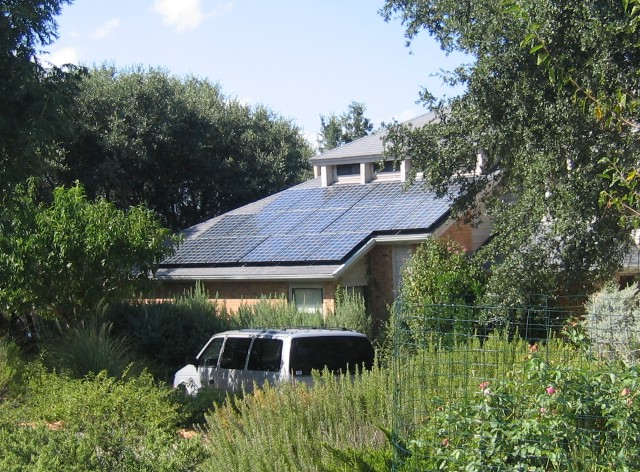

Sol, our sun, shines about 1000 watts of power onto each square meter of the Earth. This is used by plant life to sustain the ecosystem of life. The remaining power is reflected into space, drives the weather, and eventually turns into heat. If we take a portion of this energy from the sun, it can eventually replace our energy needs currently met by fossil fuels, which life took millions of years to make. The use of solar energy does not add more heat to the earth, does not create green house gases which can affect the climate, and it leaves fossil fuels for their more valuable uses as raw materials.
Photovoltaic solar cells are reaching the cost levels that will make them the most economical and environment friendly source of energy. As demand for them grows, the efficiencies of scale will continue to lower their costs. If every rooftop were covered with solar cells optimally pointed toward the sun, and if this energy were fed into the grid and into storage, this could satisfy a major portion of our energy requirements.
| "A 100 mile by 100 mile square of Texas covered with solar cells would on average produce enough electricity to run the country." |
The city of Austin Texas has taken a wonderful, forward looking step toward using renewable energy and recently passed one of the best incentive programs for encouraging the use of roof-top Photovoltaic solar cells. Some raw solar cells are down to $3 per watt while the subsidy pays $5 per watt. Mounting, installation, and the inverters which connect them to the electric grid cost more. However, with a 25 year warranty, these cells are an attractive investment in our future. Try out the unofficial Solar Energy Calculator. Also, visit Austin Energy and read about their Solar Rebate program.
If you have any comments, questions or suggestions for this site, please email them to solar
Another worthwhile endeavor: Contribute your computer's idle time for the betterment of humanity and the world, see World Community Grid.


This photovoltaic solar panel installation by Texas Solar Power Company of Austin, Texas

